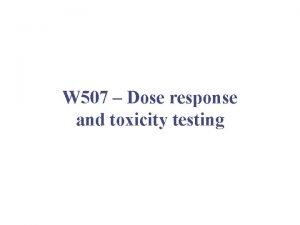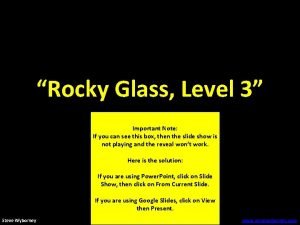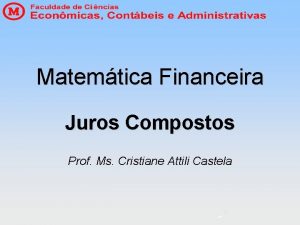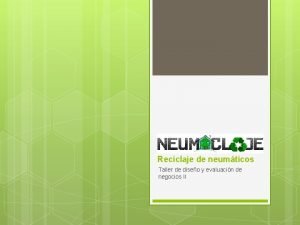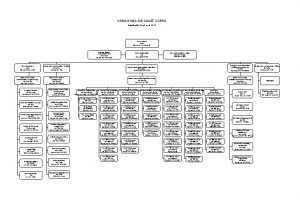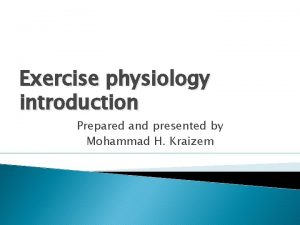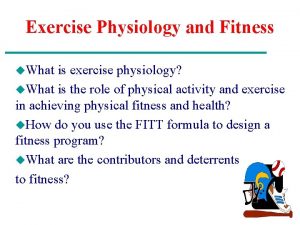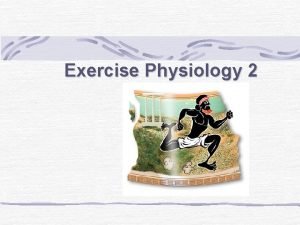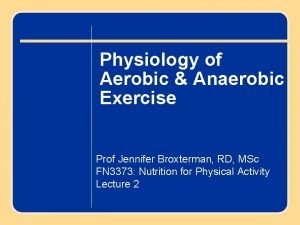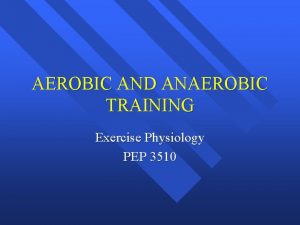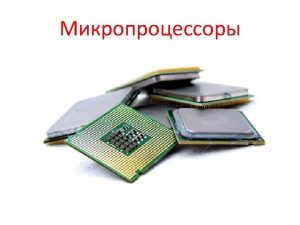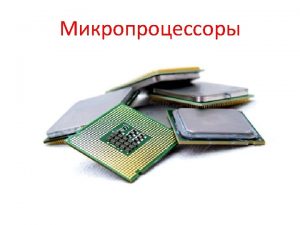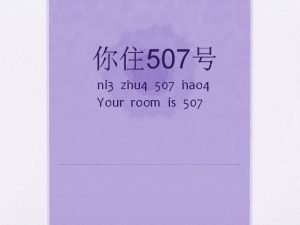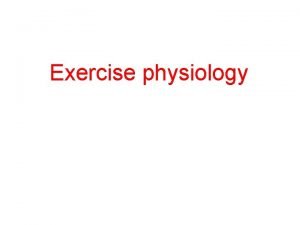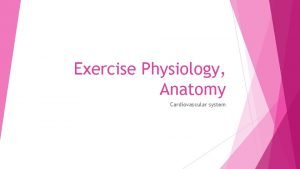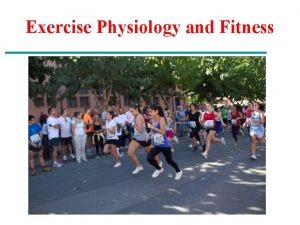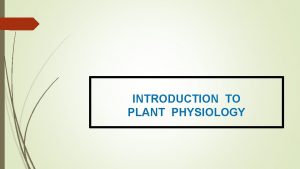LGA 507 Exercise Physiology Energy Systems II Image
















- Slides: 16

LGA 507 Exercise Physiology Energy Systems II Image by Scottish Athletics

Aims and Objectives An overview of the principle energy systems in the human body Examine the role of ATP in providing energy to the human body for metabolic work Examine ATP/CP system Have an overview of anaerobic glycolysis

Fuels Used During Anaerobic Energy Pathways Glycogen = Polymer (chain) of glucose molecules. Stored in the muscle (400500 g). Teach people new skills, techniques and strategies -Glucose Variety of = different Simpleteaching form of a methods and stylesit’s specific to of carbohydrate, a type athlete sugar (found in the blood - Have suitable knowledge and stream. ) C 6 H 12 O 6 experience Breakdown of this chain = glycogenlysis. It takes only a few minutes to reach this target value. When the value is reached and the oxygen cost is comfortably met, by jonthescone we refer to this. Image as steady rate oxygen uptake. Image by size 8 jeans

Fuels Used During Anaerobic Energy Pathways All forms of carbohydrate from the diet whether they are animal (glycogen) or plant (starch) carbohydrates, sugars such a glucose, fructose, lactose, maltose are ALL converted to simple glucose before use by the body. HOWEVER only the glycerol part of fats can be turned into carbohydrate – BUT excess carbohydrate and protein can be turned into fat. Image by size 8 jeans

Glucose / Glycogen Breakdown and Synthesis A Molecule of Glucose Glycolysis - Breakdown of glucose; may be anaerobic or aerobic Image by DDFic Image by Klaas 1978 Teach people new skills, techniques and strategies - Variety of different teaching methods and styles- specific to by Glycogenolysis Process athlete which glycogen is broken Have suitable knowledge and into glucose-6 -phosphate to beexperience used by muscles Glycogenesis - Process by which glycogen is synthesized from glucose to be stored in the liver

Glycolysis Overview Glucose Glycogen 2 ATP USED 1 ATP USED Glucose-6 -Phosphate Fructose-1, 6 -di. Phosphate Lactic Acid Pyruvate 2 ATP In reality this process is very complicated but you just need to know that 4 ATP are produced. 3 ATP

Glycolysis: A Closer Look I Extracellular space Glucose Hexokinase Intracellular space Glucose-6 -P Glycogen 1 -P Fructose-6 -P Glycogen Phosphorylase PFK - Fructose-1, 6 -Bi. P Lactate dehydrogenase Glycogen Pyruvate Lactic Acid Increased ADP concentration increases the activity of glycogen phosphorylase. This breaks down glycogen so it can go through glycolysis

Glycolysis: A Closer Look II Extracellular space Glucose Hexokinase Intracellular space Glucose-6 -P Glycogen 1 -P Fructose-6 -P Glycogen Phosphorylase PFK - Fructose-1, 6 -Bi. P Glycogen Pyruvate Lactic Acid Increased activity of glycogen phosphorylase stops hexokinase from working. This stops glucose entering the cell.

Glycolysis Regulators - Hexokinase Glucose Hexokinase Pi Hexokinase phosphorylates the glucose molecule so that it can never escape the muscle fibre

Glycolysis: A Closer Look III Glucose Hexokinase Intracellular space Glucose-6 -P Glycogen 1 -P Fructose-6 -P Glycogen Phosphorylase PFK Fructose-1, 6 -Bi. P Glycogen Pyruvate Lactic Acid Increased ADP concentration increases the activity of glycogen phosphorylase. This breaks down glycogen so it can go through glycolysis

Regulation of Glycolysis • Regulation of glycolysis depends on: • Hexokinase • Phosphofructokinase • Glycogen phosphorylase Images owned by Human Kinetics

Glycolytic Energy System Occurs in the cytosol of the cell Requires 10 enzymatic reactions to breakdown glucose and glycogen into ATP and pyruvate The glycolytic system is anaerobic (without oxygen) The pyruvate produced by anaerobic glycolysis becomes lactic 1 molecule of glycogen produces 3 mol ATP; 1 mole of glucose produces 2 mol of ATP. The difference is due to the fact that it takes 1 mole of ATP to convert glucose to glucose-6 -phosphate, whereas glycogen is converted to glucose-6 -phosphate without the loss of 1 ATP. Image owned by Kevin L. Merry

Lactate • Lactate is not a waste product – it’s a valuable energy source for other tissues and fibres • The Cori cyle – whereby lactate is used to reform glycogen in the liver and kidneys (gluconeogenesis) Image by Patricia. R

Glycolysis Regulators - Phosphofruktokinase PFK controls the rate of glycolysis What happens to the speed of glycolysis if PFK activity is slow? What happens to the speed of glycolysis if PFK activity is high? Glycolysis Regulators Image by David S. Goodsel What causes the change in PFK activity? Low ATP (or high ADP) concentration increases PFK activity High ATP (or low ADP) concentration decreases PFK activity

Summary • ATP is the energy currency for all metabolic processes • How ATP can be generated by ATP/CP and glycolytic systems (cytosolic) • Understand the action of key enzymes (ATPase, CK, PFK) • ATP yields from different systems Image by afroboof

References Mc. Ardle, W, D. , Katch, F, I. and Katch, V, L. (2006). Exercise Physiology: Energy, Nutrition and Human Performance. 6 th Edition. USA: Lippincott Williams and Wilkins Powers , S. and Howley, S, T. (2006). Exercise Physiology: Theory and Application to Fitness and Performance. 6 th Edition. New York: Mc. Graw-Hill Wilmore, J. and Costill, D. (2005). Physiology of Sport and Exercise. 3 rd Edition, Illinois: Human Kinetics
 Lga exercise
Lga exercise Acute toxicity
Acute toxicity Umh 507
Umh 507 Esti mysteries google slides
Esti mysteries google slides Juros compostos formula
Juros compostos formula 507-802-380
507-802-380 Upc 2-507
Upc 2-507 Hk air cadet corps
Hk air cadet corps Section 507 of the 2015 minnesota residential building code
Section 507 of the 2015 minnesota residential building code Pediatric exercise physiology
Pediatric exercise physiology Define exercise physiology
Define exercise physiology Wolters kluwer
Wolters kluwer Isometric vs isotonic
Isometric vs isotonic Isometric exercise physiology
Isometric exercise physiology Myeloma uk forum
Myeloma uk forum Anaerobic exercise physiology
Anaerobic exercise physiology Pep 3510
Pep 3510

